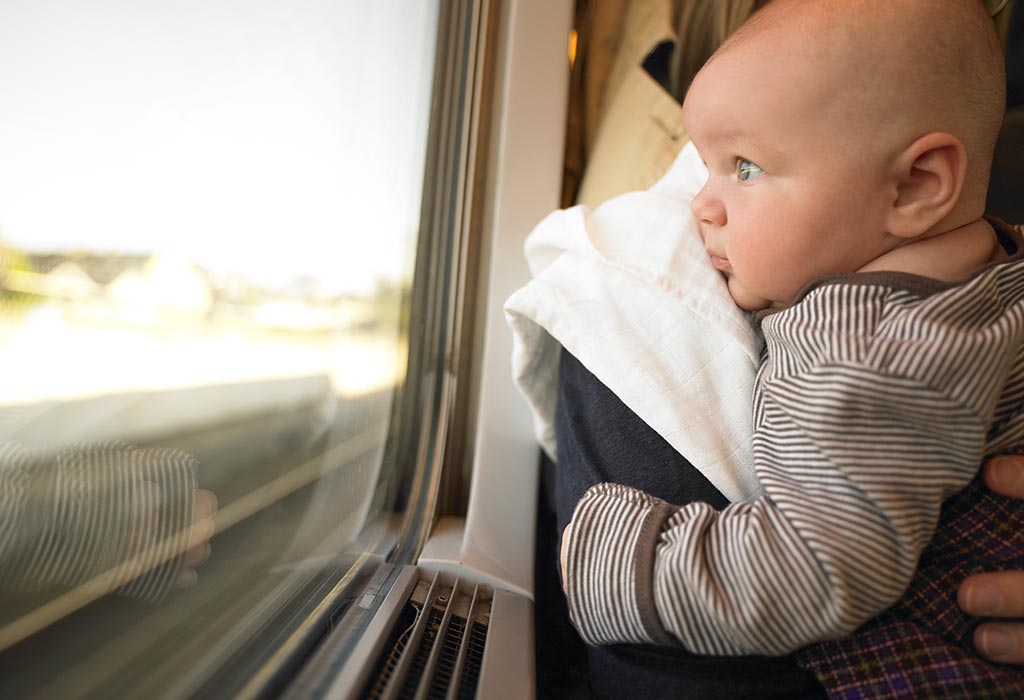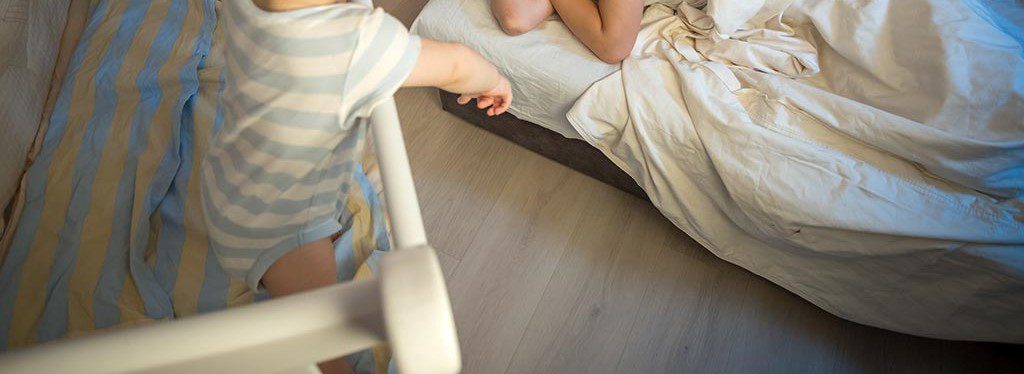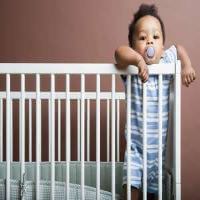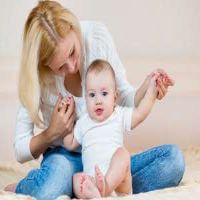Cosmetic ear piercing in children. Do you have a little girl and are considering getting her ears pierced? When can you pierce a child's ears? Is it safe for children to wear earrings? When you ask other mothers whether it is safe to pierce a child's ears, you'll likely get a variety of answers. Some will tell you that it's harmful for a baby to have their ears pierced during infancy, while others will tell you that it's perfectly fine.
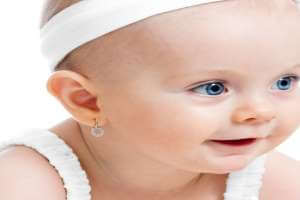
Cosmetic ear piercing for children, is it safe, the correct methods, and when is it done?
In fact, around the world, there are many cultures where newborn girls' ears are pierced, even before they leave the hospital. Does this mean it's safe? Well, we're here to find out.
There are many reasons why some parents choose to pierce their baby girl's ears. For many, it's a matter of personal preference or even family or cultural tradition. Perhaps they think it looks cute. Or perhaps they use it as a means of gender identification so strangers won't come up to them and tell them what a beautiful baby they have. Other parents see it as a way to respect cultural values.
Some prefer to have the pediatrician do this soon after birth, sometimes even before leaving the hospital. Even if the parents decide to postpone it and let the child decide when she is older, this is a deeply rooted tradition in these cultures; girls are likely to grow up and want their ears pierced anyway.
Do you need: Baby nails, how to cut them, the correct ways to do so without hurting him?
Expert opinion on cosmetic ear piercing for children?
If you ask medical providers, the first answer will generally be that this is considered an elective procedure, meaning something that is not necessary for your child's health and safety, and you as a parent "choose" to have it done.
For every medical procedure, the next step is to review and understand the risks versus benefits before making a final decision to proceed.
Benefits of cosmetic ear piercing for children
- The procedure meets family expectations or cultural traditions.
- Many people think that getting a piercing while they are still a baby is easier for them when they are old enough to remember the pain.
- Parents can care for the ears afterward to ensure they remain clean while continuing care recommendations are followed.
- With earrings, the baby will be more easily identified as a girl.
- The family feels the earrings are cosmetically pleasing.
Do you need: Infant crying during sleep, its causes, is it dangerous for the child?
Potential risks of cosmetic ear piercing for children
Your pediatrician will likely raise the following points for you to consider regarding potential risks:
infections
A range of infections should be considered, from mild and superficial to abscess formation requiring drainage. Several concerns should be discussed in this topic.
Whenever a skin piercing is performed, any bacteria living on the surface can be pushed inside and begin to multiply, leading to infection. A baby's earlobe isn't a very clean place. Babies spend a lot of time lying down, which causes saliva and spit to drip onto their ears and earlobes, creating an environment conducive to bacterial growth.
Children tend to reach into their ears more often after having their fingers in their mouths, which helps introduce oral bacteria to the area.
Children's immune systems are not yet fully developed, making infections easier to start, and more difficult to treat.
Cosmetic ear piercing in children, is it safe, the correct methods, and when is it done?
vaccinations
It's a routine procedure during the first year of life, and tetanus, in particular, is a possibility, though rare. Many doctors recommend waiting until after completion of a tetanus series before taking the risk.
According to a recent article in Peds in Review, there have been reports of hepatitis B and C being spread through ear piercing, possibly due to unclean needles or piercing equipment.
There are risks associated with underlying medical conditions, such as congenital heart disease and immunodeficiency. In these cases, infection could cause more harm to your baby than usual.
With immunodeficiency, the chance of bloodborne infections is much greater, making it more susceptible to other parts of the body. With congenital heart disease, there is concern that bloodborne bacteria could set up shop on a heart valve, creating a serious condition called endocarditis. The earlier the puncture is performed, the less likely these medical conditions will be detected in a child.
Do you need: Bathing the baby, the guide and basic rules for caring for the newborn baby
2. Shock
Accidental pulling on the earlobe is common; also a blanket or clothing can catch the earring and tear the delicate earlobe tissue.

3. Swelling
Sometimes the back of an earring can become embedded in the earlobe. This can happen from wearing it on the ear while sleeping. If the earlobe is very thick and the earring is slightly taut, a little swelling in the area will only make it worse. This can cause inflammation and lead to pain, tissue damage, and infection.
4. Swallowing
In addition to infection, swallowing is probably one of the most serious risks associated with ear piercing. As children grow, they will grasp anything they can get their hands on and place it in their mouths.
There are times when you can't directly monitor your baby for one reason or another, such as while driving, while you're sleeping at night, or even if you're busy with something while your baby is in the room with you. This can happen in just a few seconds.
All it takes is a slight loosening of the earring, and the child will be able to grasp it and risk choking on it, coughing, then inhaling it, causing it to descend into the airway. This is called aspiration, and it is not uncommon in infants and young children.
5. Allergic reactions
Allergic reactions to materials in earrings, such as low-quality steel or nickel, are common.
Even high-quality gold or steel earrings can contain nickel studs, which can cause contact dermatitis in the area but also in other parts of the body that have become sensitive. Chronic inflammation in the areas, along with itching and discomfort, increases the risk of infection.
6. Scarring
Keloid scars are a type of skin repair reaction that results in a scar that accumulates and persists indefinitely. No one knows who will develop keloid scars, but some people are more prone to healing this way than others.
Keloid scars are generally difficult to treat, because any further break in the skin, even through a corrective procedure, only increases the risk of another keloid forming.
7. Pain
There is a brief period of pain with the procedure, as you can imagine, and the areas will be sore for a day or so afterward, especially if you touch the area. Additionally, cleaning the earlobe with alcohol will sting at first, but this will improve as the skin heals.
8. Poor cosmetic results
Yes, ear piercing is considered cosmetic, meaning it's a medical procedure performed to enhance your child's appearance. It's important to remember that there are a few reasons why the result may not be what you expected.
For example, babies' earlobes are smaller than those of older children, making it more likely that the piercing will get lost and create an unwanted effect.
Another thing that increases the risk is that babies move and cry, especially when stressed, and this can affect the desired outcome. If you've decided to go ahead with the piercing, you've reviewed all the risks and benefits, spent some time considering it, and decided you want to go ahead with piercing your child's ears. Let's go over the things to consider when preparing and planning the procedure.
Do you need: Child running away from bed, how do I teach my child to sleep in his bed?
Who should pierce my child's ears?
Normally, when we want to pierce our ears, we go to an earring seller, or sometimes a jeweler. However, when piercing a child's ears, it's best to seek help from a pediatrician. One of the main reasons for this is that not all piercing facilities have the appropriate equipment or staff for young children.
Cosmetic ear piercing in children, is it safe, the correct methods, and when is it done?
Consider using an ear piercing gun—it's not guaranteed that the staff has properly trained them. In the worst case scenario, your child could contract hepatitis or another blood-borne disease.
Therefore, you should ask your pediatrician to perform the procedure or recommend someone who can do it under the safest conditions. If your pediatrician performs this procedure, they will usually use a sterile needle. They will begin by cleaning the area. They will then likely make a small dot with a marker to indicate where to insert the needle. The doctor will then puncture the skin and insert a pair of sterile earrings. These are typically made of hypoallergenic surgical steel, titanium, platinum, or 24-karat gold, which reduces the chance of any adverse reactions. It is also important to consider using safety-backed earrings to prevent your child from accidentally pulling them out, which could create a choking hazard.
Do you need: Cloth diapers, how to wash them, good washing and sterilization methods?
Does ear piercing hurt the child?
Children feel pain the same way we do, and if you've ever had a piercing, you know they tend to hurt. For ear piercings, the pain isn't excessive, which is why doctors don't administer anesthesia.
The anesthetic injections probably hurt more than the piercing! Many mothers report that their babies cried more when they got their vaccinations than when they got their piercings.
What you can do, however, is ask your pediatrician to apply some topical numbing cream to the earlobe. This will take the edge off the pain and also helps when a professional performs the procedure. They know where to insert the needle, can anticipate how and when your child is likely to move, and can do it quickly.
If your baby is older and eating solid foods, it's a good idea to bring a favorite snack. This can be a great distraction or a tasty reward afterward. Just make sure nothing is in their mouth when you start the process. You can help everything go smoothly by holding your little one so they don't move. In the meantime, talk to them gently, sing a song, or read a book with them. Remember to stay calm—if you startle, they will too.
Do you need: Pedialyte: Rehydration Solution to treat dehydration in children?
Caring for the area after ear piercing
After the procedure, it's important to take good care of and monitor the area. Ask your pediatrician what they recommend. They'll typically ask you to leave the earrings in for at least six weeks to allow them to heal.
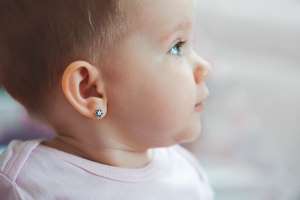
During ear piercing you should:
Wipe around the earlobe with alcohol: Ask your doctor, but they usually recommend wiping the area twice a day with rubbing alcohol or another antibacterial preparation.
Twist or rotate earrings: At least once a day, gently rotate the earrings in your ear. This will prevent them from getting stuck.
Dry the area after every bath: It's important to keep the piercing area from getting wet. After each shower, grab a clean towel and gently dry the area.
Make sure the clips are not too tight: The earrings should have some give from front to back at the holes, and the backs should not press too tightly against the earlobe. This can cause tissue compression and impede blood flow, interfering with healing and increasing the chance of infection.
Pay close attention: Monitor the area daily, and don't forget to regularly check behind the earlobe. Be on the lookout for signs of infection, which may occur if the redness and tenderness increase daily rather than improve as expected.
Do not press on the ear: Avoid applying pressure while cleaning or rotating, as this may be painful.
Do you need: Burping a baby after breastfeeding, tricks and tips to do it the right way
When can I change earrings after ear piercing?
After six weeks, your baby's earlobes should be healed. You can now remove the first earrings and insert them yourself. You should be aware of the materials used in earrings, especially if your baby is young. Many parents choose metal earrings. If you choose to use metal earrings, gold or silver are the safest option.
Cosmetic ear piercing in children, is it safe, the correct methods, and when is it done?
Doctors generally recommend earrings made of at least 14-karat gold. Make sure the post and backing aren't made of low-quality steel or nickel. Gold, platinum, titanium, and surgical steel are less likely to cause skin irritation or contribute to infection.
At the end of the day, piercing a baby's ears is not at all unusual. Various cultures around the world view it as a sign of femininity, and some may even have it done while in the hospital after the baby's birth.
Piercing a child's ears is generally considered safe, according to many doctors, but it does carry risks. Like most elective procedures, it's usually no problem when everything goes according to plan. But there are times when, even when you've done everything right, something goes wrong that could have been prevented. These are the situations that parents find difficult.
It's important to remember that it's an elective procedure, something that can wait until your child is older if you choose to do so. After considering the risks and benefits, if you do choose to go ahead with the procedure, be sure to take the recommended precautions, such as having a professional perform the procedure and ensuring they use sterile instruments and hypoallergenic earrings. Always follow any aftercare advice. Look for adverse reactions and contact your doctor if anything changes.
the source : Is It Safe To Pierce Your Baby's Ears?
